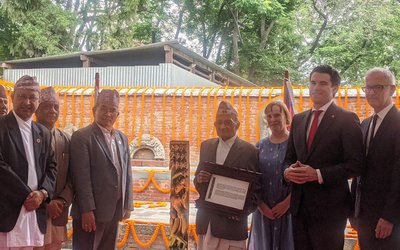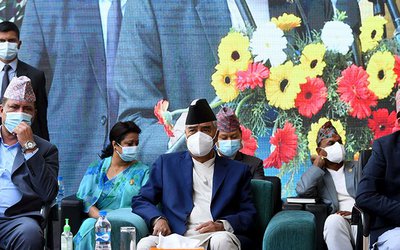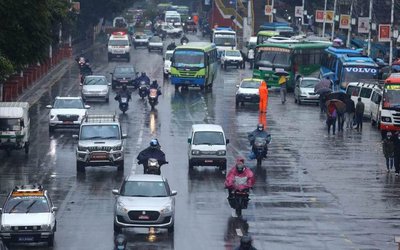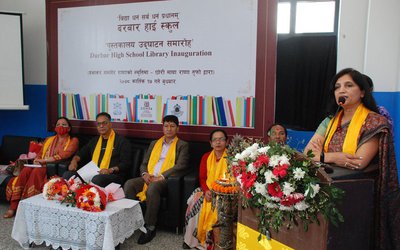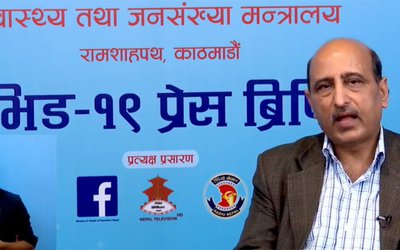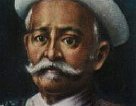
A list of about 200 outstanding world figures of all times was published in the wave site BADASS that included names like Marshal Zukov, Douglas MacArthur, Edmond Hillary, Charlemange, King Solomon, Sir Francis Drake, Queen Laxmi Bai of Jhansi etc. Name of Bhakti Thapa is also in that list. It is described in that wave site that the death of Bhakti Thapa in Deothal Battle is like the Gorkha version of Hector dying at the end (to protect his country in Trojan War).
British Nepal War
Historian C.B.Khanduri quoting various contemporary British historians has written "The euphemism of the bravest of the braves had been used by Napoleon for Marshal Ney, whose bravery during the retreat from Moscow in 1812 was one of the highest. Brave les brave, said Napoleon of him. Such was the bravery shown by Bhakti Thapa that the next legend of the Bravest of the Braves had been created on the day April 16, 1815 at Deothal".
Bhakti Thapa's dominating role in 1814-16 Anglo Nepal War is described in Nepal Army History also. It is quoted in that history book ( based on Vikramjit Harsat's book: History of Nepal ) that the Great Nepal's territory remained intact until Bhakti Thapa was alive after his death it started to be squeezed (bhakti thapa-ko deha rahe- samma nepal-ko bhuvag charam bistar-ko sthithi ma theo tespachi akunchit hudai gayo).
LALMOHARS and Bhakti Thapa
Unfortunately, Bhakti Thapa's crucial role in transforming within a short period Nepal's status from an insignificant state to that of a formidable power in the South Asian Sub-continent became known very lately in 1960s only after Historian Narahari Nath published the official LALMOHAR documents addressed to Bhakti Thapa bearing the royal seal in the magazine HIMABATKHANDA. Mr. C.P. Khanduri has written a book on Nepal history after the publication of LALMOHARS. He has conclusively written "Bhakti Thapa had impressed the Gorkha commanders during the War of Consolidation and joined those who were to be the eventual rulers of Nepal. Kazi Amar Singh Thapa had traded in the footsteps of Bhakti Thapa."
Political Upheaval and Bhakti Thapa
Historian Mr. R.K. Shah has written that the state of uncertainty and anxiety characterized the reign of Pratap Singh and the regency of Queen Ragendra Laxmi that followed after the passing away of Prithivinarayan Shah. However, sudden death of Ragendra Laxmi completely overturned the political scenery of Nepal. Unjustly banished Bahadur Shah returned back to become regent and severely punished those who had conspired against him. Resilient Bhakti Thapa, who had preferred to remain in prison rather than to give in to the pressure to join then Gorkha army loyal to the regent queen ( who had broken the solemn oath of the ancestors of Gorkha and Lamjung kings not to annex one another's territory), was persuaded to play leading role in unification campaign to establish mighty Great Nepal.
Serious Omission in History
Historian L.F. Stiller has written that it was during the Bahadur Shah's regency Nepal passed from the status of an insignificant state to that of a formidable power in the South Asian subcontinent. Unfortunately our historians never tried in the past to find out who helped Bahadur Shah to turn Nepal into South Asian power
Fortunately, it has become clear based on the above mentioned LAMOHARS published in the magazine Himabatkhanda that throughout Bahadur Shah's regency Bhakti Thapa had played decisive role in extending Nepal's western boundary up to Yamuna river (at present in India).
Biggest Hurdle at Very Beginning
Historian Stiller has written based on Hamilton "Jumla was the key to the west. Jumla had collected an army to face the Gorkhalis, a force far superior to anything the Gorkhalis could put in the field at that time. It is not surprising that Jumla with such an army was able to resist Gorkhali army for more than two years". Thus further extension of Nepal to the west would have been totally unthinkable without subduing the resistance of Jumla. At that critical moment Bhakti Thapa was sent to lead the Jumla operation.
Bhakti Thapa completely changed the strategy of his predecessors to subdue Jumla. He led his army to Jumla following the difficult and long northern Humla route. Bhakti Thapa scored a swift victory at minimum human loss. It is clearly stated in the LALMOHARS sent to Bhakti Thapa after the completion of Jumla operation that he had been assigned for the job believing in his performance capability.
Doti and Beyond
According to the LALMOHAR Bhakti Thapa was strongly cautioned that his resources are quite limited and thus he should not advance beyond Jumla. Highly encouraged after the great success in Jumla operation Bhakti Thapa is seen to have completely ignored the instruction of the Capital. Poet Shakti Ballab in a poem in Sanskrit has written about Bhakti Thapa's campaign to unite Doti soon after Jumla operation. After the Doti operation Kumaun and Garwal were also incorporated into Nepal. Within a short period of about two years the Yamuna river became Nepal's western border.
Bhakti Thapa's Decisive Role
During the Bahadur Shah's regency period when Nepal passed from the status of an insignificant state to that of a formidable power in South Asian Sub-continent, Bhakti Thapa had played a decisive role, which becomes apparent from the virtually unlimited authorities vested in him according to the LALMOHARS as described hereinafter.
At a time when the Nepal's western border was already Yamuna river and his headquarter was far away at Almora, Bhakti Thapa, who began his association with Nepal's unification campaign from his brilliant Jumla operation, still continued to exercise enormous authority over a vast region extending from Yamuna river right up to Chepe-Marshyagdi on matters related to mass mobilization, control of all military garrisons, deployment of local rajas, constructions of forts and fortification, building bridges and roads etc. He was authorized to receive foreign head of states or their representatives and hold negotiations with them and sign the agreements unless it is deemed necessary to refer them to the capital.
It is most astonishing that Bhakti Thapa was even vested in authority to disburse fund to support the Center. In one of the LALMOHARS the king has` written not to cut the emolument of his brothers and nephews without his prior concurrence.
- COVID-19 Pandemic And Nepal: WHO Guidelines
- Sep 07, 2021
- Bhakti Thapa: Neglected History
- Mar 11, 2021
- MAKING NEPAL SOUTH ASIAN POWER :Decisive Role Of Bhakti Thapa
- Mar 15, 2019

